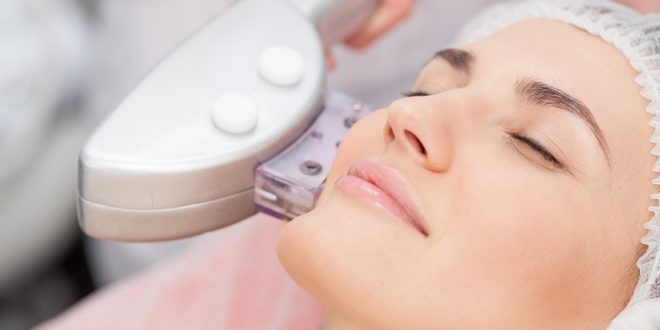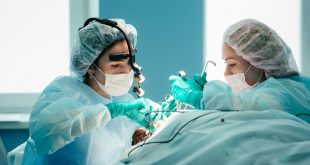Laser skin resurfacing is an important development in the skin rejuvenation techniques. It is designed to reduce the signs of aging, correct acne scars and treat skin damage.
Laser resurfacing is a relatively bloodless technique that offers skin care professionals more control on the penetration depth of the skin.
The word laser in laser skin resurfacing stands for “light amplification by the stimulated emission of radiation”. It works by producing a powerful beam of light, which travels in one direction with one specific color of light.
There are two kinds laser skin resurfacing – CO2 skin resurfacing and erbium laser resurfacing. Depending on background, condition and preference, the skin care specialist will help you decide which laser is more appropriate for your condition.
Carbon dioxide (CO2) Laser Resurfacing is used to treat wrinkles, warts, scars, birthmarks, rhinophyma, skin cancer and other skin conditions.
Also Known As: Laser Peel, Lasabrasion, Laser Vaporization
Benefits of Laser Skin Resurfacing
Laser resurfacing can benefit patients because it improves treatment results, offers bloodless and precisely controlled surgery, acts as an alternative or addition to other skin procedures and yields safe and effective results.
Laser skin resurfacing is beneficial to patients because it causes less bleeding, scarring and bruising, provides a level of control, allows visualization of results and gives a more predictable result.
Laser resurfacing is usually performed on patients with crow’s feet, wrinkles, acne scars, chickenpox marks, skin discoloration and areas of sun damage.
The Laser Skin Resurfacing Procedure
Carbon dioxide and erbium are the most commonly used lasers used in skin resurfacing. Both lasers vaporize the superficial and damaged skin cells, while reducing the risks for the patients due to controlled heat.
Both CO2 and erbium laser resurfacing uses local anesthesia combined with oral or intravenous sedatives.
Carbon dioxide (CO2) Laser Resurfacing uses short-pulsed light energy, which are delivered in a scanning configuration to remove thin layers of skin precisely. Recovery time may take two weeks.
Erbium Laser Resurfacing is used to remove deep lines and wrinkles on face and other parts of the body. This kind of skin laser resurfacing provides minimal burning around the tissues and reduces the side effects such as redness, bruising and swelling. Recovery time may take one week.
A partial-face laser resurfacing takes 30 to 45 minutes, while the full-face skin resurfacing treatment takes one to two hours.
Recovery After Laser Skin Resurfacing Procedure
Although the laser skin resurfacing itself is painless, severe irritation and redness can be experienced after the procedure.
During the first several days, the patient’s face will look swollen and skinned, gradually becoming crusty. However, the itching and redness may last up to five months.
Patients should refrain from exposure to the sun immediately after the procedure, while healing and after recovery. Sunbathing is permanently prohibited.
Medications such as antibiotics, analgesics and anti-inflammatory medications are prescribed routinely.
The skin should be kept moist during the first few weeks by using clean dressing regularly. When the dressing is removed, skin moisturizers are needed for two to three consecutive weeks.
The Results
The complete result from laser skin resurfacing may take a few months to become visible. Once the pinkish color of the skin fades, the skin becomes fresher and smoother.
Although the results are long lasting, the effects of laser skin resurfacing is not permanent. Signs of aging will eventually show and natural facial lines will recur.
Fortunately, laser skin resurfacing can be repeated within a duration prescribed by your skin care specialist.
Surgical facility And Cost
Laser skin resurfacing is performed in a hospital, office-based facility or an outpatient surgery center usually as an outpatient basis. However, for extensive skin resurfacing, hospital admittance is recommended.
The average cost of laser skin resurfacing is around $2,500. Depending on the surgeon fees, number of treatments needed, area to be treated, geographical location and other charges such as anesthesia, the cost ranges from $1,000 to $4,000.
Side Effects, Risks, Complications and Contradictions
Complications can be prevented with proper post-operative care. Although rarely occurs, patients may experience herpes simplex, bacterial and fungal infection, contact dermatitis, pigmentary changes, permanent scarring and milia.
 Lesbian, Gay, Bisexual, Transgender & Intersex News Lesbian News, Gay News, Bisexual News, Transgender News, Intersex News, LGBTI News
Lesbian, Gay, Bisexual, Transgender & Intersex News Lesbian News, Gay News, Bisexual News, Transgender News, Intersex News, LGBTI News




